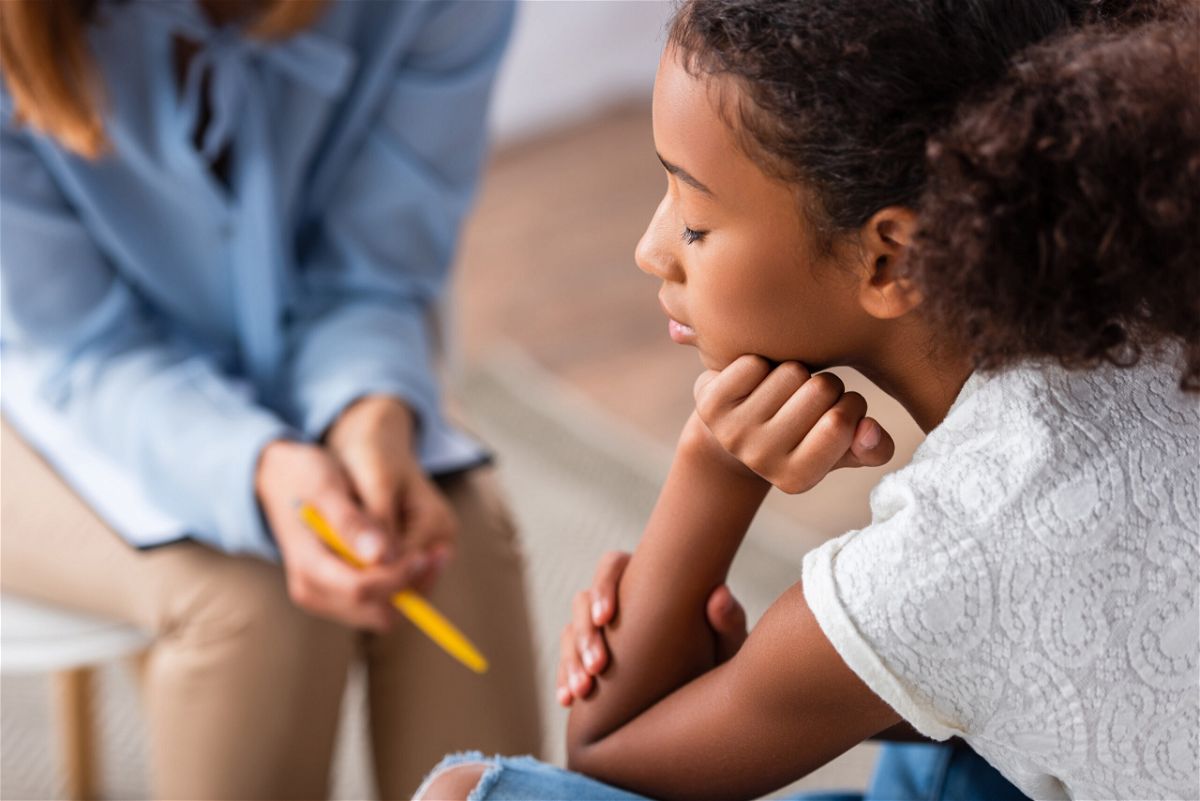For the first time, influential task force recommends screening children 8 and older for anxiety

The US Preventive Services Task Force has recommended screening for anxiety in children 8 and older.
By Naomi Thomas, CNN
For the first time, the US Preventive Services Task Force has recommended screening for anxiety in children 8 and older.
In its final recommendations, published Tuesday in the medical journal JAMA, the task force also urged screening for depression in children 12 and older, consistent with recommendations from 2016.
Both sets of recommendations apply to children who don’t have a diagnosed mental health condition and who are not showing recognized symptoms of anxiety or depression.
The members considered recommendations on screening for suicide risk in children and adolescents but said there’s not enough evidence on its harms and benefits.
“The Task Force reviewed the evidence on screening for anxiety, depression, and suicide risk to provide primary care professionals with guidance on how they can help support the mental health of children and adolescents,” member Martha Kubik, a professor with the School of Nursing in the College of Health and Human Services at George Mason University, said in a news release. “Fortunately, screening older children for anxiety and depression can identify these conditions so children and teens can receive the care that they need.”
The USPSTF is a group of independent disease prevention and medical experts whose recommendations help guide doctors’ decisions.
According to the US Centers for Disease Control and Prevention, between 2016 and 2019, about 5.8 million children were diagnosed with anxiety, and approximately 2.7 million were diagnosed with depression.
“The 2018-2019 National Survey of Children’s Health (NSCH) found that 7.8% of children and adolescents aged 3 to 17 years had a current anxiety disorder,” the new recommendation says. “Anxiety disorders in childhood and adolescence are associated with an increased likelihood of future anxiety disorder or depression.”
In addition to the lack of evidence on suicide risk screening, the USPSTF said it did not have sufficient evidence to make a recommendation for anxiety screening in children 7 or younger, or depression screening in children 11 and under.
“The Task Force cares deeply about the mental health of all children and adolescents. Unfortunately, there are key evidence gaps related to screening for anxiety and depression in younger children and screening for suicide risk in all youth,” member Lori Pbert, a clinical psychologist and professor at the University of Massachusetts Chan Medical School, said in the news release. “We are calling for more research in these critical areas so we can provide healthcare professionals with evidence-based ways to keep their young patients healthy.”
The USPSTF also noted that it found no evidence on appropriate screening intervals for depression or anxiety.
Last month, the task force posted draft recommendations that for the first time said adults under 65 be screened for anxiety.
Pbert told CNN at that time that an anxiety recommendation was prioritized “because of its public health importance, especially with the increased focus on mental health in this country that we’ve been having for the past few years.”
In an editorial published alongside the new children’s recommendations Tuesday, doctors from the Ann and Robert H. Lurie Children’s Hospital, Weill Cornell Medicine and the University of Cincinnati said that an evidence report provided with the recommendations doesn’t give specific or actionable guidance for how screening should happen in primary care settings, and that there are outstanding questions around screening.
However, “While future research efforts are needed to address the gaps in the evidence base, the available evidence appears to support moving forward with implementing screening and treatment for anxiety disorders in pediatric primary care settings,” they wrote.
They call this “very good news,” saying that most psychiatric disorders, including anxiety disorders, begin during childhood and adolescence.
“Screening in the pediatric primary care setting is important for early identification and offers the potential for earlier and more effective treatment to reduce distress, impairment, and morbidity associated with delayed recognition and treatment,” they said.
In another editorial published Tuesday in JAMA, Dr. Oscar Bukstein of Boston Children’s Hospital addressed the depression and suicide risk recommendations: “Suicidal behavior is among the most critical of medical emergencies for adolescents,” and screening for suicide is the “cornerstone of suicide prevention.”
“It is not coincidental that the USPSTF considered evidence for suicide and depression screening in the same updated Evidence Report and Systematic Review,” he wrote. “Given the salience of depression as a risk factor for suicidal behavior and the value of depression screening as supported by the USPSTF recommendation, screening for suicide under the umbrella of depression screening could accomplish both screening tasks at the same time.”
Bukstein also said that the recommendations from the task force suggest there are many more questions to be asked than can be answered with current evidence.
The-CNN-Wire
™ & © 2022 Cable News Network, Inc., a Warner Bros. Discovery Company. All rights reserved.